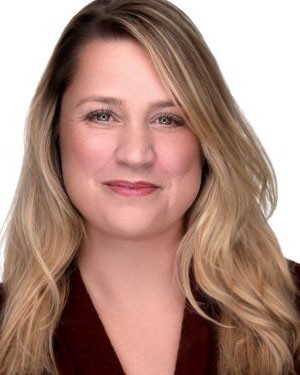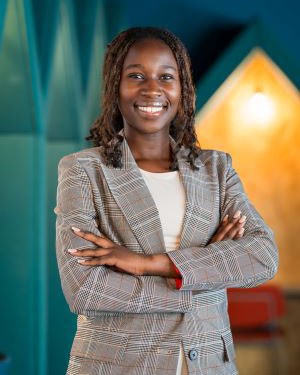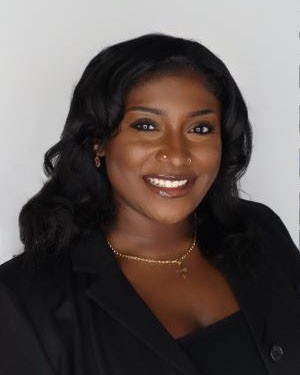RESEARCH AND SCHOLARSHIP
Our department has nationally and internationally recognized scholars whose research addresses critical questions about society and the criminal justice system and has significant academic and policy impacts.
FACULTY SCHOLARSHIP

Allison Ann Payne, PhD, published the article “The Search for Social Justice in School-Based Crime and Delinquency Prevention” in The ANNALS of the American Academy of Political and Social Science.
Rick Eckstein, PhD, along with several co-authors, published the article "Meet the FARs: An Examination of the Background, Roles, and Appointment of Faculty Athletic Representatives at National Collegiate Athletic Association Member Institutions" in the Journal of Issues in Intercollegiate Athletics.
Guillermo Jesús Escaño, PhD, along with David McDowall, PhD, and William Alex Pridemore, PhD, published the article “Mano Dura V. Uneasy Peace in El Salvador: Effects of Tough-on-Crime and Gang Truce Policies in the Former Murder Capital of the World” in The British Journal of Criminology.
Heidi Grundetjern, PhD, with coauthor Kurt Fowler, published the article “We’re basically just naked therapists: Sexwork, stigma, and psychological empowerment” in Criminology.
Max Osborn, PhD, published the article “Groomers, Gays, and Gender Ideology: Why the Anti-LGBTQIA+ Legislative Backlash is a Moral Panic and Why Criminologists Should Care” in Punishment & Society.
Lorena Ávila, PhD, focuses on the role of law and legal bureaucracies in propelling inequalities through the immigration system. Her research aims to give visibility to the experiences, resources, and challenges of migrant families and migrant’s rights advocacy networks navigating inequality and racialization propelled by bureaucratic structures in place.
Meredith Bergey, PhD, is working on a paper with Thomas Mackie, PhD, Giuseppina Chiri, PhD, and Nikki Freeman, PhD, that examines intersecting social identities and health inequalities.
Glenn Bracey’s, PhD, scholarship examines the intersection of race, social movements, and religion. Drawing on research conducted through the Race, Religion, and Justice Project (rrjp.org), Bracey’s current work explores whiteness as a religion and the implications of the religion of whiteness for Christians of color.
Rick Eckstein, PhD, is currently exploring the social class bias in non-revenue intercollegiate sports. He recently appeared on the September episode of Real Sports with Bryant Gumbel (S29 E9) where he discusses special admissions for college athletes.
Guillermo Jesús Escaño (he/him), conducts research focusing on crime and violence in Latin America and the Caribbean, organized criminal groups, the structural and cultural causes and consequences of violence, and criminal justice policy (evidence-based practices). He is a quantitative researcher, mainly using panel and time series models.
Heidi Grundetjern, PhD, is currently conducting research focused on women's drug use utilizing a trauma-informed psychosocial perspective.
Lance Hannon, PhD, is currently working on a variety of sociological and criminological research projects utilizing digital text analysis tools.
Melissa Hodges, PhD, is currently working on a project that examines the relationship between the structural arrangements of care systems and variation in the distribution of economic inequality across gender, race, and class cross-nationally.
Brian J. Jones, PhD, is writing a book for Palgrave Macmillan entitled The Pursuit of Happiness in America.
Rory Kramer, PhD, is finishing work on a book manuscript about diversity within the Black student body at selective colleges and universities with colleagues at Penn and Princeton. He is also working on a related paper on the impact of racial disparities in exposure to stressful events on college completion rates.
Jill MCCorkel, PhD, was granted a two-year research fellowship with the Philadelphia District Attorney's Office. Her project investigates the influence of prosecutorial discretion on increases in the number of women serving life and virtual life sentences.
Max Osborn, PhD, is examining how LGBTQIA+ people navigate risk, safety, and gender presentation during encounters with institutional actors such as police and service providers. He is also studying representations of transgender victims of violence in the news media.
Allison Ann Payne, PhD, is collaborating with our department’s research associate, Denise Wilson, on a multilevel study examining the influence of school-related risk and protective factors on traditional and cyberbullying.
Brianna Remster, PhD, and Melissa Hodges, PhD, are investigating the incarceration-wage penalty for women compared to men.
Ken Sun, PhD, is currently working on two manuscripts, including a single-authored book on aging and migration, and the other on transnational social protection (with Professors Peggy Levitt, Erica Dobb, and Ruxandra Paul).
Kelly Welch, PhD, is editing the Research Handbook on Race, Crime, and Justice. The handbook is under contract with Edward Elgar Publishing.
Emerson, Michael and Glenn Bracey. (2024). The Religion of Whiteness. How Racism Distorts Christian Faith. Oxford University Press.
Jones, Brian. (2024). The Pursuit of Happiness in America. A Sociological Perspective. Palgrave Macmillan.
Levitt, Peggy, Erica Dobbs, Ken Chih-Yan Sun, and Ruxandra Paul. (2023). Transnational Social Protection. Oxford University Press.
Charles, Camille Z., Massey, Douglas S., Torres, Kimberly C., & Kramer, Rory. (2022). Young, Gifted and Diverse: Origins of the New Black Elite. Princeton University Press.
Sun, Ken Chih-Yan. (2021). Time and Migration: How Long-Term Taiwanese Migrants Negotiate Later Life. Cornell University Press.
Jones, Brian. (2019). Social Capital in American Life. Palgrave Macmillan.
Bergey, Meredith R., Angela M. Filipe, Peter Conrad, and Ilina Singh (Eds.) (2018). Global Perspectives on ADHD. Social Dimensions of Diagnosis and Treatment in Sixteen Countries. Johns Hopkins University Press.
Ávila, Lorena and Sarah Tosh. (2024). The institutional hearing program and the incarceration-to-deportation pipeline. Critical Criminology.
Ávila, Lorena and David Ibañez. (2023). An expensive pass to freedom: Bond amounts trajectories in immigration court. American Behavioral Scientist.
Rengifo, Andres F., Lorena Ávila, and David Ibañez. (2023). Criminal defense work in a sample of arrest hearings in three states of Mexico: The micro-dynamics of case-level engagement, influence, and strategy. Crime, Law and Social Change.
Bergey, Meredith. (2024). Medicalization in global context: Current insights, pressing questions, and future directions through the case of ADHD. Sociology Compass.
Bergey, Meredith. (2024). “Pills don’t teach skills”: ADHD coaching, identity work, and the push toward the liminal medicalization of ADHD. Journal of Health and Social Behavior.
Corr, Chris, Christopher Atwater, Mark S. Nagel, Richard Southall, Rick Eckstein, and Marek Taškár. (2025). Meet the FARs: An Examination of the Background, Roles, and Appointment of Faculty Athletic Representatives at National Collegiate Athletic Association Member Institutions. Journal of Issues in Intercollegiate Athletics.
Escaño, Guillermo Jesús, David McDowall, and William Pridemore. (2025). Mano Dura v. Uneasy Peace in El Salvador: Effects of Tough-on-Crime and Gang Truce Policies in the Former Murder Capital of the World. The British Journal of Criminology.
Escaño, Guillermo Jesús and William Alex Pridemore. (2024). Population-level alcohol consumption and homicide rates in Latin America: A fixed effects panel analysis, 1961–2019. The British Journal of Criminology.
Escaño, Guillermo Jesús. (2024). Latin American homicide. In K. Burgason & M. DeLisi. (Eds.), Routledge Handbook of Homicide Studies (pp. 41-64). Routledge.
Escaño, Guillermo Jesús. (2023). Region-specific structural covariates of homicide rates in Latin America: State legitimacy and remittances. Justice Quarterly.
Fowler, Kurt W. and Heidi Grundetjern. (2025). “We’re basically just naked therapists”: Sexwork, stigma, and psychological empowerment. Criminology.
Grundetjern, Heidi and David Gadd. (2025). Toward a Trauma-Informed Psychosocial Criminology: A Case Study of Women’s Methamphetamine Use. Feminist Criminology.
Hannon, Lance, Lindsay Redditt, and Brooke Cordes. (2024). Curbing pretextual traffic stops to reduce racial profiling. Agenda for Social Justice 3 Solutions for 2024.
Hannon, Lance and Meredith Bergey. (2024). Policy variation in the external evaluation of research for tenure at U.S. universities. Research Evaluation.
Kramer, Rory, Victor Ray, and Eduardo Bonilla-Silva. (2025). Introduction: Racism of Omission. Social Problems.
McCorkel, Jill, Paisley Hahn, and Isabella Balian. (2024). Parenting from prison. Graterfriends.
Osborn, Max. (2025). Groomers, gays, and gender ideology: Why the anti-LGBTQIA+ legislative backlash is a moral panic and why criminologists should care. Punishment & Society.
Moore, B., Max Osborn, and C. DeJong. (2025). Consequences and considerations of “free speech” in higher education: Validating trans and non-binary identities in the classroom setting. Journal of Criminal Justice Education.
Osborn, Max, Tanyanne Ball, and Valli Rajah. (2024). Peer support work in the context of intimate partner violence: A scoping review. Trauma, Violence, & Abuse
Osborn, Max. (2023). “Something could happen to you at any moment”: Safety, strategy, and solidarity among trans and nonbinary protesters against police violence. Critical Criminology.
DeJong, Christina, Max Osborn, and Harnoor Kaur. (2023). Trans panic: The representation of trans women as murder victims in true crime podcasts. In A. E. Goldberg, D. C. Slakoff, and C. L. Buist (Eds.), The (Mis) Representation of Queer Lives in True Crime (pp. 160-182).
Osborn, Max. (2023). Difficult, deceptive, and dangerous: Portrayals of victimized transgender men in crime news coverage. In A. E. Goldberg, D. C. Slakoff, and C. L. Buist (Eds.), The (Mis) Representation of Queer Lives in True Crime (pp. 183-201).
Payne, Allison Ann. (2024). The search for social justice in school-based crime and delinquency prevention. The ANNALS of the American Academy of Political and Social Science.
Payne, Allison Ann. (2024). Reducing school crime and student misbehavior: An evidence-based analysis. In B. Welsh, S. Zane, and D. Mears (Eds.), The Oxford Handbook of Evidence-Based Crime and Justice Policy.
Payne, Allison Ann and Kelly Welch. (2023). Minority threat in schools and differential security manifestations: Examining unequal control, surveillance, and protection. Crime & Delinquency.
Sun, Ken Chih-Yan and Lijun Lin. (2025). Confronting linked immobility: how Chinese migrants managed family crisis during a global catastrophe. Social Forces.
Sun, Ken Chih-Yan and Baiyu Su. (2023). “Who should care for our parents?” How the perceived achievement hierarchy complicates transnational family relations in China? International Migration Review.
Sun, Ken Chih-Yan and Nicole Newendorp. (2023). How age and life stage of relocation fosters social belonging: Comparing two groups of older migrants in the United States. The Journals of Gerontology: Series B.
Welch, Kelly and Allison Ann Payne (2025). Unequal “in”security: How differential school security approaches discriminate against students of color. In A. Eizadirad and P. P. Trifonas (Eds.), Handbook of Anti-Discriminatory Education.
STUDENT SPOTLIGHT

Rita Sogoti ’26 CLAS
In the summer of 2025, I had an incredible opportunity to intern in Dublin, Ireland, through the Frederick Douglass Daniel O’Connell Global Internship program. This eight-week program was organized by the Council on International Educational Exchange (CIEE) in partnership with the Government of Ireland and the African American Irish Diaspora Network. The program honors the legacies of two great social justice leaders, Frederick Douglass and Daniel O’Connell, and aims to connect young leaders with meaningful international work experiences.
This was my first time studying abroad, and it was truly a dream come true. I had always desired to study and work in another country. I was placed at Abbey Law Solicitors, a law firm located in Dublin City Centre. Abbey Law specializes in human rights and immigration law. The firm also handles a variety of legal areas, including judicial review, family law, criminal law, and personal injuries. I served as a Legal Intern, where I had the chance to gain real-world experience and build practical skills in a professional setting.
Throughout the internship, one of my key responsibilities was preparing and reviewing the Book of Pleadings before submitting it to the High Court. I personally worked with five to ten clients each week on various legal matters, which included assisting with family reunification applications, citizenship cases, visa applications, and helping clients prepare for their affidavits. I accompanied clients to the International Protection Office (IPO) to get registered, often supporting them through the process with my solicitor's supervision. I regularly attended legal proceedings and handled most of the call-overs and mentions. Witnessing the Irish proceedings gave me a new lens on how other countries pursue justice.
A particularly meaningful part of my experience at Abbey Law was working with clients from many different countries and cultural backgrounds. I had the privilege of helping individuals and families from Somalia, Afghanistan, Kenya, South Africa, China, Nigeria, and other parts of the world. This exposure not only expanded my global perspective but also deepened my understanding of how the legal system must adapt to meet the special needs of diverse populations.
The experience gave me a deeper understanding of Irish and European immigration and refugee law, as well as the human rights challenges faced by vulnerable communities. I witnessed the challenges people face in trying to receive justice, and it was rewarding to contribute to making a permanent change in their legal needs. My work was both empowering and eye-opening, and it confirmed my interest in pursuing a career in law focused on justice.
Living and working in Ireland also gave me a chance to experience Irish culture. I enjoyed exploring the country, learning about its history, and connecting with people from all over the world. Everyone I met was friendly and welcoming, which made it easier to immerse myself in Irish culture.
This incredible opportunity would not have been possible without the support of several important organizations and Individuals. I would like to sincerely thank the CIEE, the Office of Education Abroad (OEA), the Center for Access, Success, and Achievement (CASA) and Villanova. Their guidance and support made this internship a reality, and I am deeply grateful.
My transformative experience gave me the chance to grow, not only personally, but professionally. I am grateful that I was able to come out of my comfort zone through my unique exposure.

Thereasa Whyte ’26 CLAS
During my junior year at Villanova, I chose to write my political science research seminar paper on the impacts of crime-based political messaging on voter decision-making. Under the guidance of Dr. Dixon, I explored how political campaigns use fear-based narratives about crime to shape voter priorities, candidate favorability, and trust in institutions. My research included a survey experiment design where participants would be randomly assigned to view either a crime-focused ad or a non-crime ad, with pre- and post-surveys capturing shifts in perception and voting intention. The project drew heavily on theories of agenda-setting, racial priming, and emotional appeals, while also identifying gaps in the literature concerning social media and demographic differences.
The paper examined how “tough on crime” rhetoric distorts the democratic process by pushing voters toward punitive policies while obscuring deeper social causes of crime. I found this research particularly meaningful because of my broader academic interests in criminology and political science, as well as my own lived experiences seeing how fear-based narratives disproportionately affect marginalized communities. My criminology coursework, especially classes like Justice & Society as well as The Sociology of Race & Racism, gave me the foundation to critically analyze how political rhetoric interacts with structural inequalities.
Being named a runner-up for the St. Catherine of Siena Undergraduate Peace and Justice Research Award for this paper, affirmed the significance of my work and its contribution to understanding how rhetoric can either promote justice or reinforce inequality. Beyond the recognition, the project strengthened my ability to design research, synthesize theoretical perspectives, and connect abstract academic debates to real-world political challenges.
I fully believe that pursuing criminology and political science at Villanova has prepared me to apply research to pressing social issues. For example, my internship with the Pennsylvania House of Representatives allowed me to see firsthand how crime rhetoric shapes legislative priorities, reinforcing the themes of my paper. Additionally, my involvement in the Philadelphia Justice Project: Villanova Chapter has deepened my passion for addressing how policy, rhetoric, and justice intersect.
This project not only pushed me as a researcher but also solidified my long-term goal of attending law school and working in policy to ensure that political narratives do not distort justice but instead serve communities equitably. I am deeply grateful to Dr. Dixon and the Villanova faculty whose mentorship has shaped me as both a scholar and an advocate.
